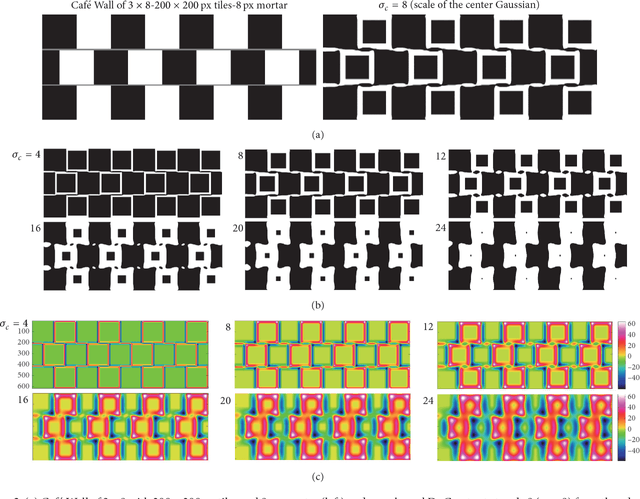The Cafe Wall Illusion: Local and Global Perception from multiple scale to multiscale
Paper and Code
Sep 17, 2017



Geometrical illusions are a subclass of optical illusions in which the geometrical characteristics of patterns such as orientations and angles are distorted and misperceived as the result of low- to high-level retinal/cortical processing. Modelling the detection of tilt in these illusions and their strengths as they are perceived is a challenging task computationally and leads to development of techniques that match with human performance. In this study, we present a predictive and quantitative approach for modeling foveal and peripheral vision in the induced tilt in Caf\'e Wall illusion in which parallel mortar lines between shifted rows of black and white tiles appear to converge and diverge. A bioderived filtering model for the responses of retinal/cortical simple cells to the stimulus using Difference of Gaussians is utilized with an analytic processing pipeline introduced in our previous studies to quantify the angle of tilt in the model. Here we have considered visual characteristics of foveal and peripheral vision in the perceived tilt in the pattern to predict different degrees of tilt in different areas of the fovea and periphery as the eye saccades to different parts of the image. The tilt analysis results from several sampling sizes and aspect ratios, modelling variant foveal views are used from our previous investigations on the local tilt, and we specifically investigate in this work, different configurations of the whole pattern modelling variant Gestalt views across multiple scales in order to provide confidence intervals around the predicted tilts. The foveal sample sets are verified and quantified using two different sampling methods. We present here a precise and quantified comparison contrasting local tilt detection in the foveal sets with a global average across all of the Caf\'e Wall configurations tested in this work.
 Add to Chrome
Add to Chrome Add to Firefox
Add to Firefox Add to Edge
Add to Edge